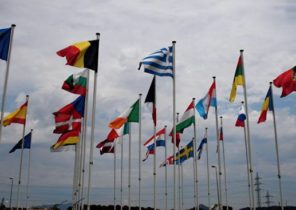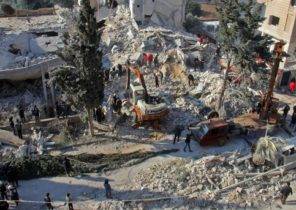Russian MiG rises from the Franz Josef Arctic ocean and heading for Greenland. On his belly he fixed missile of distant radius of action.
After a few minutes of flight, the rocket separated from the aircraft and sent into space to a moment later to pass again through the atmosphere at a speed ten times the speed of light, and destroy radar base in Tula.
It is not just imagination — today Russia can do that. We don’t know how far flies the new Russian rocket “Dagger”, but one thing is certain: with his speed, accuracy and at least a thousand kilometer radius, it changes the balance of power in the Arctic.
Without a doubt, “the Dagger” is a new weapon which the United States simply must find a counterweight in Greenland, says Lieutenant commander Anders Nilsen Pooka (Puck Anders Nielsen), military analyst at the defence Academy.
“Radar Tule — part of the missile shield, and in the event of war the Russians just want to destroy them. And now they are virtually not protected, so the Americans have a new task in Greenland,” says Anders Nielsen Bunch.
In addition, the new ultra-fast missile and the short time for reaction, that it leaves the enemy, demonstrate how quickly something can go wrong in the conflict between the West and Russia.
When in 2018 the rocket “Dagger” was presented along with five other types of superweapons, it became clear that their target is the West. Much attention was then paid to their ability to overcome any missile shields, explains Anders Nielsen Bunch. And now ready and other novelties.
“At the moment the situation is very tense, there is a risk that will be drawn the wrong conclusions, something goes wrong and will provoke escalation,” says a military analyst.
The threat in the Baltic region
For many years when discussing the threats to Denmark and NATO from Russia, especially a lot of attention is paid to the Baltic States.
The report dealing with policy issues the safety of the American analytical center RAND in 2016, indicates that Russia could take all three Baltic capitals for 48 hours. Since then, Denmark and other NATO countries have increased the contingents in the Baltic States and Poland, and also began to conduct more joint exercises in the Baltic sea.
However, Russia is still able to take Estonia, Latvia and Lithuania again, says Polish expert on security policy Konrad Muzyka (Muzyka Konrad) in his analytical analysis for the Estonian International centre for defence and security.
Specifically, Russia will be able to use the 20-th army of the Voronezh, 6th army from Saint-Petersburg and the 1st guards tank army, which is based in the Moscow suburb of Odintsovo, says the analysis. Estimated Konrad Muzyka, mobilization of these troops will take up to a month.
“At the moment, it is unlikely that Russia planned an invasion, but if relations with NATO will worsen or, for example, the United States will not keep your promise to come to the aid of allies, one can only guess what will happen.”
Hardly a goal of Russia in this case will be the restoration of the old Empire. She just wants to push the front of the potential war as far as possible from Moscow. After the collapse of the Soviet Union, Russia almost lost the so-called strategic depth — the distance from the outer borders of the country to its core territories. It is the strategic depth of Russia, according to Konrad Muzyka, and tried to provide themselves with wars with Georgia and Ukraine.
“It can intervene to protect the Russian minority, but we need an official excuse. Russia is the most important to seize the initiative and use the element of surprise. And to capture it will have the entire territory and not just the part of Estonia not to give NATO the opportunity to gather forces,” says Conrad Música.
Threats in the Arctic
Anders Nielsen Bunch of determined not so pessimistic. He agreed that Russia could theoretically occupy the Baltic States, but it will have to pay too high a price compared to the reached profits.
But, according to Anders Nielsen of the Bunch, in the sense of dangerous conflicts far greater potential of the Arctic has for Russia, a symbolic value. Russia has secured a very strong military position due to the fact that the international rules of the game for that region are blurred.
So the West is very risk to do something that would alarm Russia. For example, if the United States really will start to send the military ships on the Northern sea route, to show that we are not talking about internal waters of Russia.
“I think the Russians will take it as an extreme violation of their sovereignty, and the situation could spiral out of control,” says Anders Nielsen Bunch.
In General NATO, however, is much stronger than Russia. Therefore, the outcome of the war ultimately depends on the integrity of members of NATO and the willingness of Russia to use nuclear weapons.
Konrad Muzyka believes that Europe and the US underestimate the nuclear threat. If, for example, NATO forces in the war over the Baltic States will be included in the Russian enclave Kaliningrad, it is very likely that this will provoke a nuclear attack, according to Russian nuclear doctrine, he explains.
“It doesn’t have to be a megaton warhead. Maybe just a small tactical nuclear bomb, to show that Russia is serious,” says Muzyka.
However, Nielsen believes that in fact the threshold of use of nuclear weapons for Russia is constantly increasing, as it become stronger conventional forces and there are opportunities to use other methods. “I believe that while Russia has alternatives, it will try to avoid nuclear weapons.”







